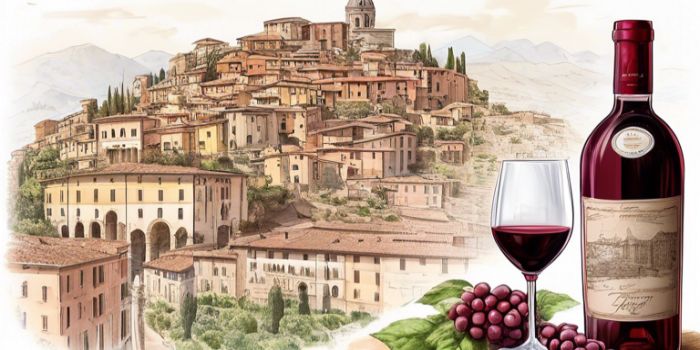
An exploration of the Italian wine landscape unveils a rich tapestry of flavours, aromas, and styles, as diverse as the country's cultural heritage itself. Italy, the cradle of some of the world's most revered wines, is a treasure trove of vinous delights. From the noble Barolo to the robust Amarone and the fruity Primitivo, the Italian wine portfolio is as extensive as it is fascinating.
This article aims to serve as your guide, leading you through the labyrinth of Italian wine regions, styles and varieties. So, let's embark on this enticing journey through Italy's vinicultural heritage, from Piedmont to Tuscany, and from Veneto to Sicily.
Italy's diverse climatic conditions and unique geographical features have allowed it to cultivate a staggering 605 varieties of grapes. This results in an overwhelming number of unique wine styles. From Piedmont's full-bodied Barolo to Veneto's sparkling Prosecco, and from Tuscany's elegant Chianti to Puglia's robust Primitivo, each Italian wine region boasts its own specialities.
In this section, we will delve into Italy's most prestigious wines, including the noble Barolo, and the powerful Amarone, along with some lesser-known gems.
Italian winemaking has roots stretching back over 4,000 years. It was a fundamental part of life even before the Greeks dubbed the land 'Oenotria', the land of wine. The Romans further promoted viticulture, spreading it throughout the region, including present-day France.
However, the 19th century saw a devastating blow to Italy's vineyards with the invasion of phylloxera pests. This led to a focus on quantity over quality, with Italy becoming a source of inexpensive table wines. Fortunately, the 1960s saw the introduction of laws to control wine quality, ushering in the modern era of Italian winemaking.
There are 20 wine regions in Italy, but for starters, here's a list of 9 of the most prestigious Italian wine regions:
Each region has its own unique characteristics, shaped by its climate, soil and local grape varieties.
Italy's 605 grape varieties form the backbone of its vast wine repertoire. The most significant amongst this number include:
Each grape variety brings its own unique qualities to the table, impacting the style, taste, and character of the wine it produces.
Italian wines are classified into four main categories:
VDT (Vino Da Tavola): These 'everyday wines' are produced for local consumption.
IGT (Indicazione Geografica Tipica): IGT wines hail from designated wine regions like Toscana and go through fewer quality checks than DOC and DOCG wines.
DOC (Denominazione di Origine Controllata): DOC wines undergo several quality checks and follow DOC winemaking laws.
DOCG (Denominazione di Origine Controllata e Garantita): DOCG wines represent the pinnacle of Italian wines, including renowned varieties like Barolo and Montepulciano.
Italian wine labels can often seem like a puzzle, with numerous unique terms and classifications. Here are some key terms to help demystify them:
Italian wines, particularly those from prestigious appellations like Barolo and Amarone, can make excellent investments. Their quality, rarity and ageing potential make them sought-after commodities in the global wine market.
However, investing in wine requires careful research and a deep understanding of the market. Factors such as vintage quality, producer reputation and market trends all play a significant role in determining a wine's investment potential.
As we journey through this array of Italian wine, it's clear that Italy's winemaking heritage is as rich and diverse as its culture. Each region, each grape variety, and each wine tells a unique story, capturing the essence of Italy in every sip. So, whether you're a wine connoisseur or a casual wine enthusiast, there's an Italian wine waiting to transport you to the heart of Italy.
| Cantine San Marzano: A Puglian Wine Legacy in the Making |
| The Truth About Wine Quality and Price |
| Unveiling the World of Prosecco: A Comprehensive Guide |